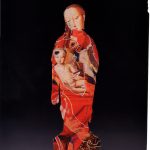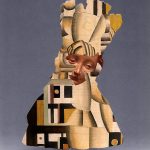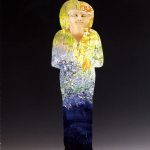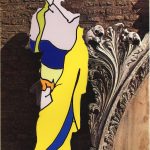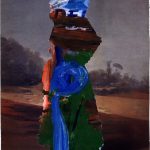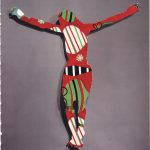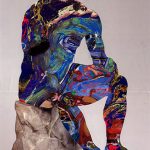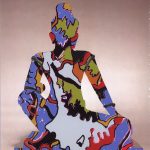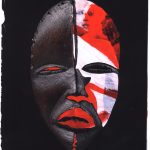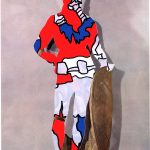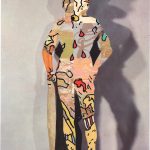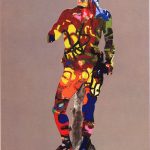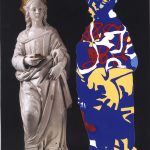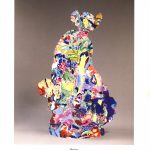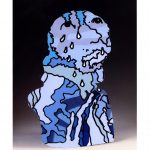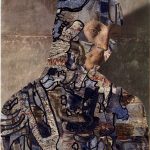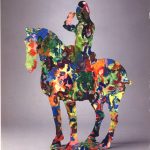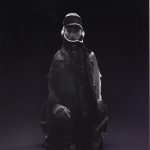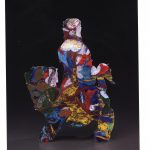My exploration of Augmented Reality generated an analog series of collages that utilize similar principles in terms of formal composition. Employing an image of a sculpture as if it were an AR marker, I cut out the shape and slid in its place an alternate image – generally an inkjet proof of a painting or some other piece of 2D studio ephemera. (All of these materials are studio detritus, so there is an element of aesthetic upcycling, as well.)
The visual result is a masked painting that sits in a sculptural space. The painting element of the collage achieves pictorial depth by appearing to exist in the round.
Considered in the vernacular of Augmented Reality, this particular collage strategy represents a bit of conjecture about the functioning of perception. The image that is inserted into an Augmented Reality context exists only in the viewer’s device – their cell phone or tablet.
Metaphorically, I see this device as akin to consciousness or the perceptual apparatus through which one makes sense of the world. In this analogy, the AR overlay might be a scrim of prior experience/expectation that modifies perception. This idea of acknowledging pre-loaded content into image-making also finds expression in my use of magazine pages as a support for painting. Instead of using fresh white paper or canvas – which might imply perfection, or that the image arises out of the void – I use a ground that already supports an image – a populated tabula rasa – to make the point that an image and the perception of an image are conditional and cumulative.
